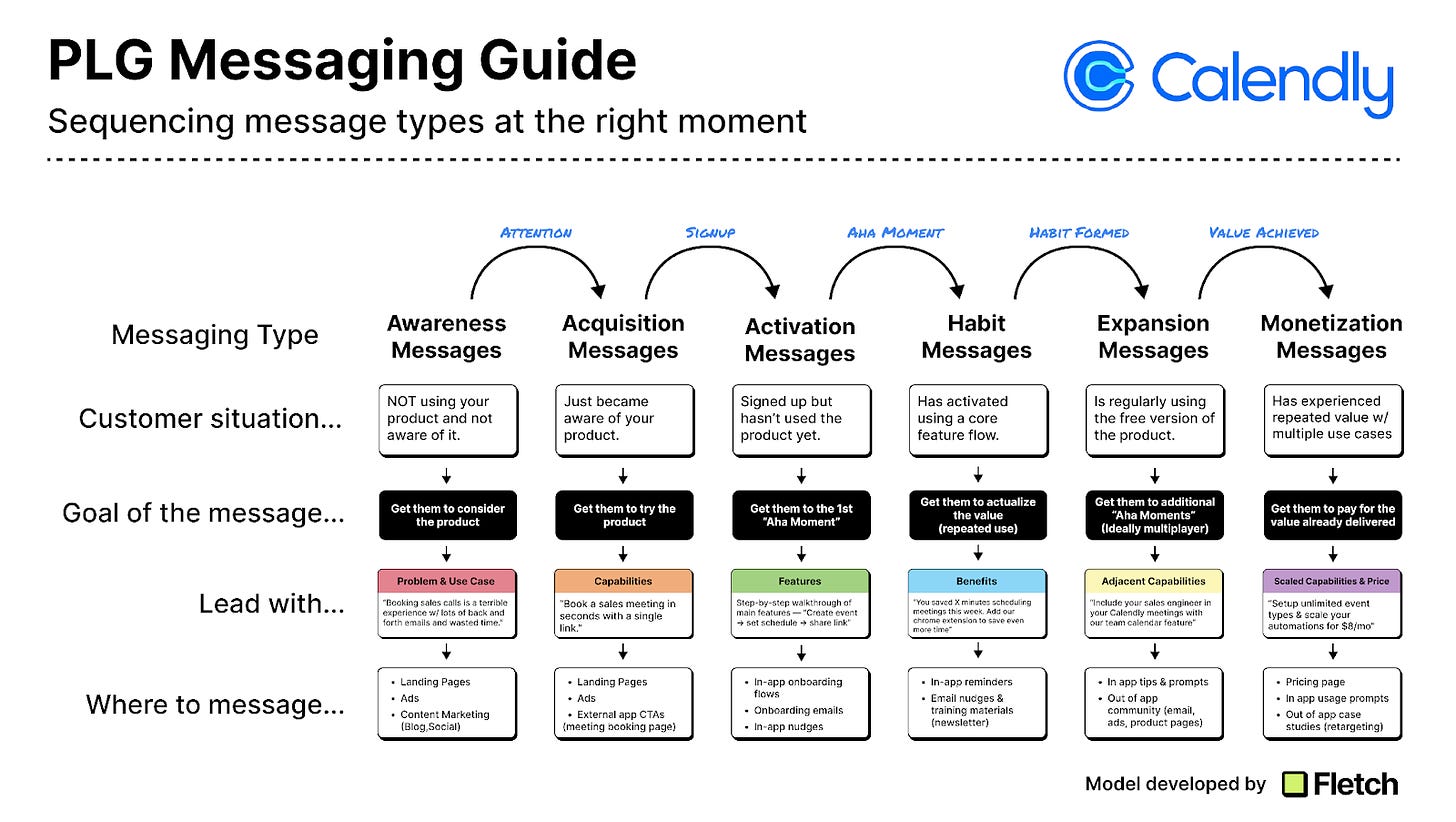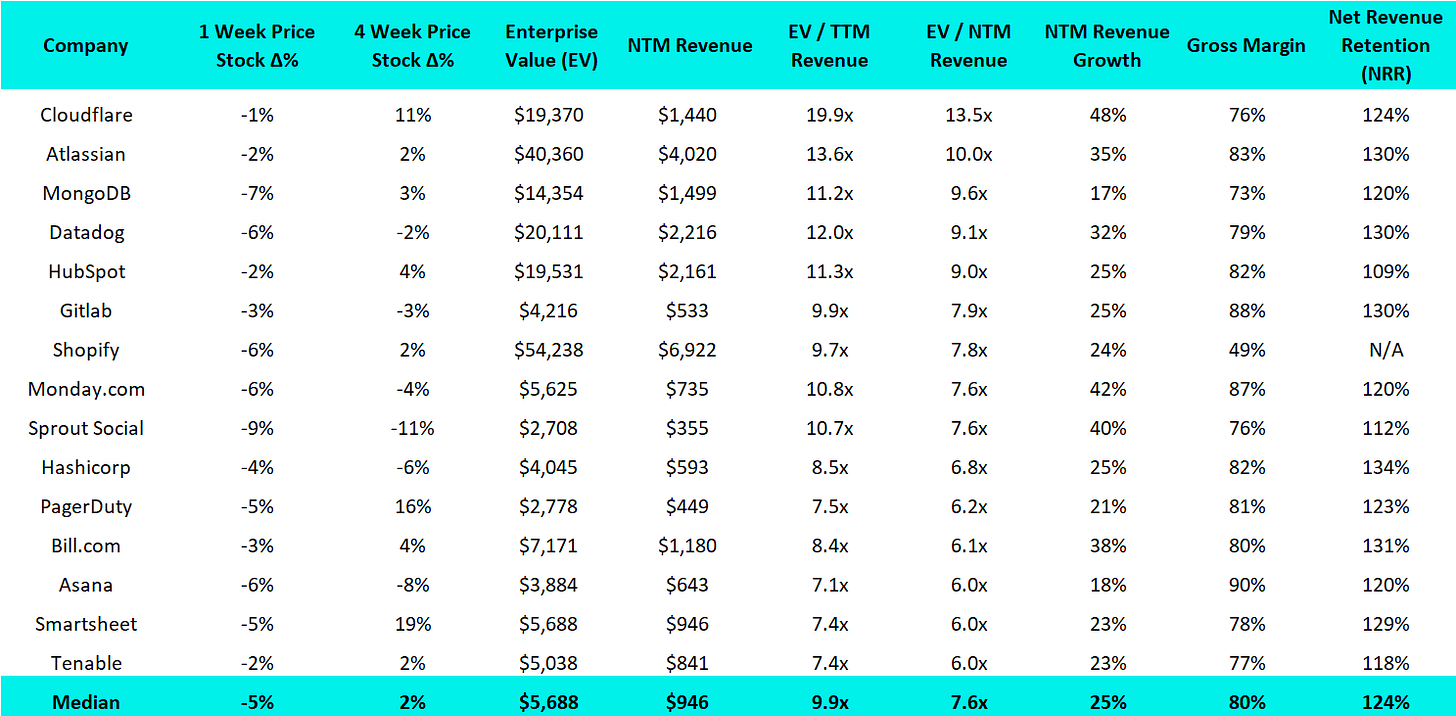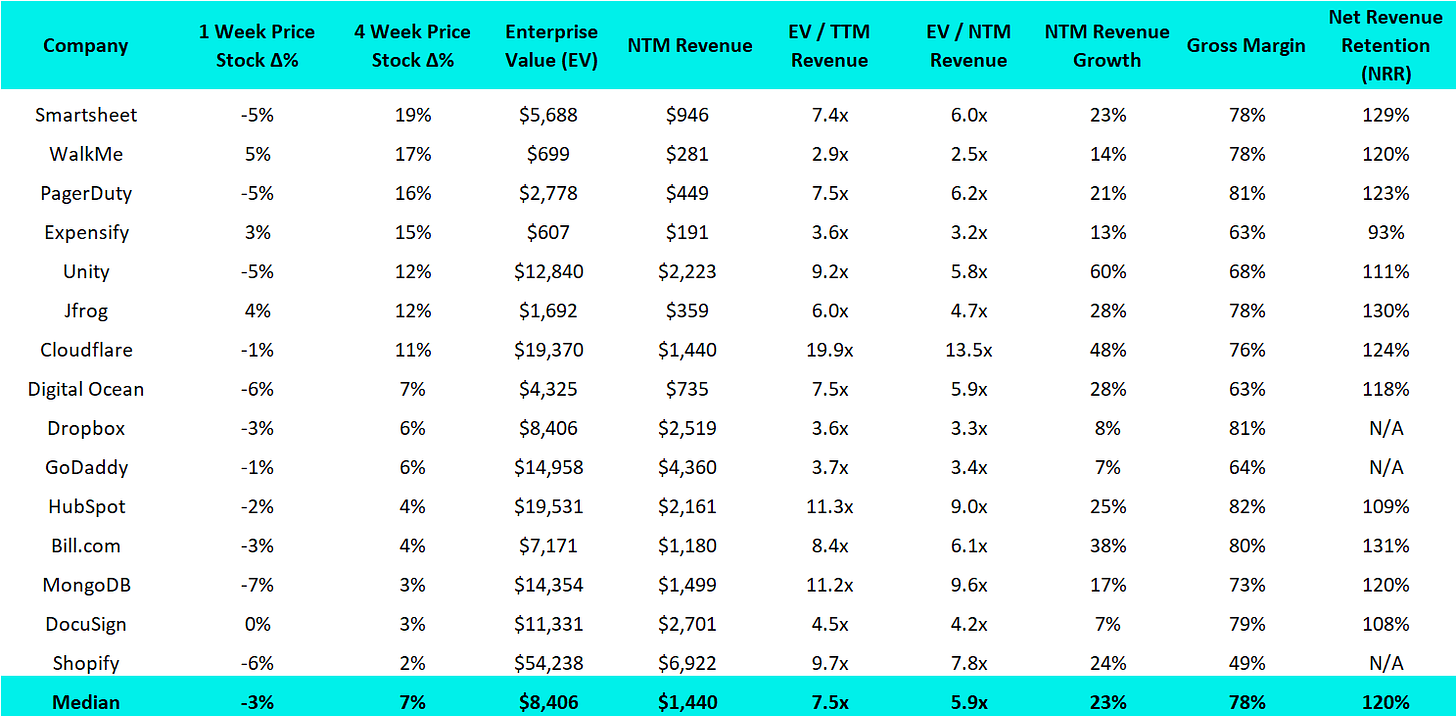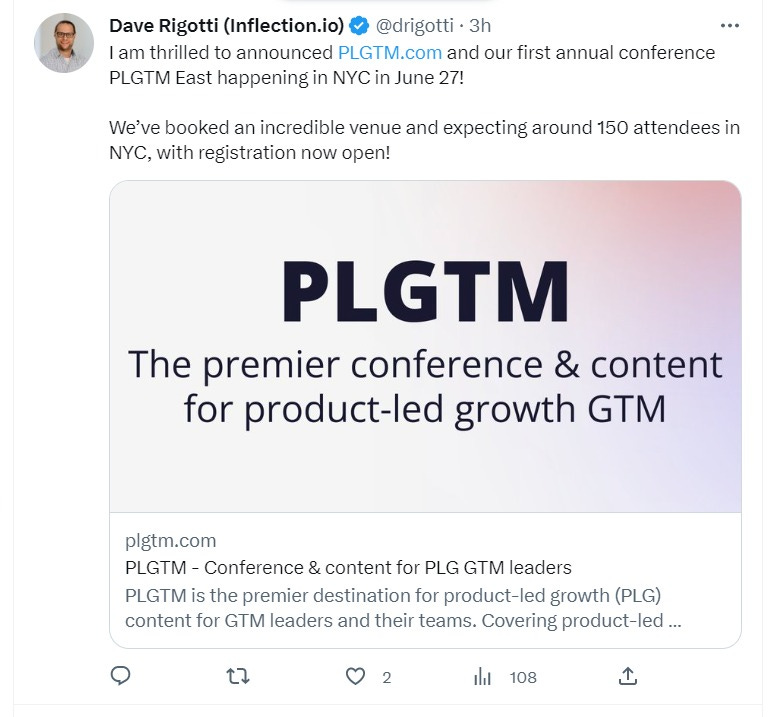NPLG 4.13.23: PLG Messaging Guide (Robert Kaminski @ Fletch)
The best PLG founders, startups, strategies, metrics and community. Every week.
Current subscribers: 6,670, +80 since last week (+1.2%)
Share the PLG love: please forward to colleagues and friends! 🙏
For this edition of Notorious PLG, we have a special guest blog post from Robert Kaminski, Co-Founder & Head of Product Marketing at Fletch (product marketing services for early-stage PLG companies). Robert posted a LinkedIn post that outlined messaging strategies for PLG companies. The post went viral in the PLG community. I shared Robert’s post with founders I work with and the response was overwhelming positive. Robert generously agreed to expand on his LinkedIn post for this special edition of Notorious PLG:
Fletch’s PLG Messaging Guide
“Messaging is the most overlooked aspect of product development. When we think of building products with a PLG approach, we consider things like features, UIs, and workflows. But these things alone don’t get a customer to find, explore, and adopt your product. And self service products don’t have the luxury of human guidance in the form of sales demos or onboarding calls.
Consider the experience of opening up a product and not seeing any messages. You’d be left with shapes and space. It’s a harsh reminder of the importance of words in and around your product.
Next consider the experience of opening up a product that has confusing messaging. Labels don’t quite capture the features. Workflow prompts are misleading and hard to understand. You’re left to fend for yourself in figuring out how the product works — And more importantly, how you adapt it to your unique situation.
These 2 hypothetical situations beg the question for founders and product leaders — How do you go about putting the right words together to create a better product experience?
Enter the PLG messaging framework.
The key to developing strong product messaging is timing. This means finding the right message for the right moment in your customer’s journey. Think of it as message-moment fit. If you land a compelling message at the right time with a prospect or user, you’re likely able to move them into the next step of their journey. If you miss with your message, you create awkward moments in your product experience, which can lead to a user churning.
This gets into another important element of our PLG message guide — Sequencing. This means understanding the natural progression of a user’s actions. Knowing how all these steps fit together is the foundation for being able to connect clear and compelling messages. And although we lay out these steps as linear, keep in mind that a user may not jump directly into the next step.
Here are the 6 message types to consider — and how to approach crafting each type.
🔴 Awareness Messages
These are the first messages your prospect will ever see before using your product. It’s important to keep in mind that they don’t know about your product yet.
Message Strategy → Lead w/ the problem & use case
The purpose of these messages is to connect with the customer’s situation and problem before introducing your product. You can’t just jump right into explaining your product until you have landed this message.
For Calendly, the problem and use case could look like this:
“Booking sales calls is a terrible experience w/ lots of back and forth emails and wasted time.”
🟠 Acquisition Messages
These messages try to drive the first action from a prospect — getting them to give your free product a try.
Message Strategy → Lead w/ capabilities
You’ve earned some time to deliver a product intro message. Don’t overwhelm your audience here. Highlight your most compelling capability that aligns to the problem.
For Calendly, a clear capability message could be:
“Book a sales meeting in seconds with a single link.”
🟢 Activation Messages
These messages are guiding messages to your new user at a time where they know very little about how your product works.
Message Strategy → Lead w/ Feature guidance
Congrats! You’ve earned a signup, but this is where the real work begins to get them to value. Be careful of introducing too many features here. You should focus on a single workflow that addresses the use case. There will be time later to introduce more stuff.
For Calendly, the main flow they need to support is this:
Step-by-step walkthrough of main features — “Create event → set schedule → share link”
🔵 Habit Messages
These messages build on activation by trying to re-create the “aha moment” repeatedly. Your customer is starting to round the corner towards getting real value from your product.
Message Strategy → Lead w/ Benefits
Your user has reached their first “Aha moment”. Now is the time to show them how impactful their repeated use is for them. Using metrics to back up these benefits can be powerful.
For Calendly, here is what a compelling metric message could look like:
“You saved X minutes scheduling meetings this week. Add our chrome extension to save even more time”
🟡 Expansion Messages
These messages move a user towards a wider adoption of your product — using additional features and ideally taking their usage multiplayer to their peers and colleagues.
Message Strategy → Lead w/ Adjacent Capabilities
At this point, your user is a retained free user. It’s time to start expanding their use towards premium features & capabilities. To do this, it’s best to connect supporting situations and use cases to the habits they have already developed.
For Calendly, here is an example of an add on use case:
“Include your sales engineer in your Calendly meetings with our team calendar feature”
🟣 Monetization Messages
These messages are geared toward value capture — getting a user to trade the repeated value they have received in the form of payment to you.
Message Strategy → Lead w/ Scaled Capabilities
The whole premise of PLG is to deliver value first, so when it comes time to ask for $ in exchange for further scaling the value… it should be an easy ask.
Be careful of putting this message in front of users that haven’t quite reached multiple “ahas” or formed habits. This could result in an expedited churn.
For Calendly, this message could look like this:
“Setup unlimited event types & scale your automations for $8/mo”
Closing thoughts on using this guide
Different products have different steps, aha moments, usage milestones, and pricing models. In order to begin developing messages for each step, you’ll first need to set the context around how your product works and the journey you are trying to take a user through. As much as possible, use data to better understand how these different stages connect with each other.
This means defining the following:
→ What are the use cases of our product?
→ What are the aha moments for each use case?
→ How do we connect these use cases together to expand adoption?
→ At what point are we confident we can ask for a premium upgrade?
And remember, messaging is like any other part of your product. It takes deep customer knowledge and iterations to develop powerful PLG messaging.”
I would love feedback. Please hit me up on twitter @zacharydewitt or email me at zach@wing.vc. If you were forwarded this email and are interested in getting a weekly update on the best PLG companies, please join our growing community by subscribing.
PLG Benchmarking (Startups):
This is a new section! I will continue to update these metrics and add new metrics. I would love your feedback on what else I should track.
Conversion rate (website → free user):
Best: 10%
Good: 5%
Activation rate (free user → activated user):
Best: 60%
Good: 30%
Paid conversion rate (free user → paid user):
Best: 8%
Good: 4%
Enterprise conversion rate (free user → enterprise plan):
Best: 4%
Good: 2%
3-month user retention (% of all users still using product after 3 months):
Best: 30%
Good: 15%
Conversion from website to free user:
<1 month on waitlist: ~50%
>3 months on waitlist: 20%
For more detail on acqusition rates by channel (Organic, SEM, Social etc), please refer to this prior NPLG.
PLG Financial Benchmarking (Public PLG Companies):
Financial data as of previous business day market close.
Best-in-Class PLG Benchmarking:
15 Highest PLG EV / NTM Multiples:
15 Biggest PLG Stock Gainers (1 month):
Complete Notorious PLG Dataset (click to zoom):
Note: TTM = Trailing Twelve Months; NTM = Next Twelve Months. Rule of 40 = TTM Revenue Growth % + FCF Margin %. GM-Adjusted CAC Payback = Change in Quarterly Revenue / (Gross Margin % * Prior Quarter Sales & Marketing Expense) * 12. Recent IPOs will have temporary “N/A”s as Wall Street Research has to wait to initiate converge.
Recent PLG Financings (Private Companies):Seed:
Dozer, a company that powers read-only APIs directly from any source via a plug-and-play data infrastructure back end, has raised $3M. The funding came from Sequoia Capital India, Gradient Ventures and January Capital.
Series A:
Strivacity, a startup that allows companies to create secure B2B and B2C sign-in experiences, has raised $20M. The round was led by SignalFire, with participation from Ten Eleven Ventures.
Series B:
LayerZero, a web3 messaging protocol, has raised $120M at a $3B valuation. Matrixport Ventures, Christie Digital Systems and OpenSea led the round, with participation from Circle Ventures, Operator Partners, Protofund, IOBC Capital, BOND Capital, Sequoia Capital, Andreessen Horowitz, Electric Ant and Samsung NEXT Ventures.
Later Stage:
Honeycomb, a platform for application monitoring based on internal tooling, has raised $50M at a $450M valuation. The round was led by Headline, with participation from Insight Partners and Scale Ventures.









